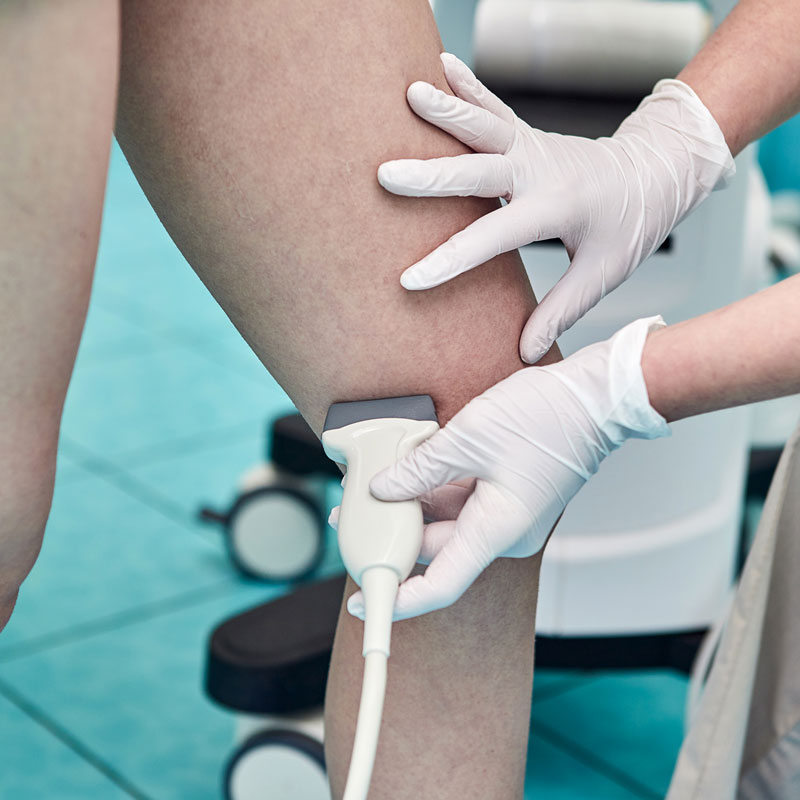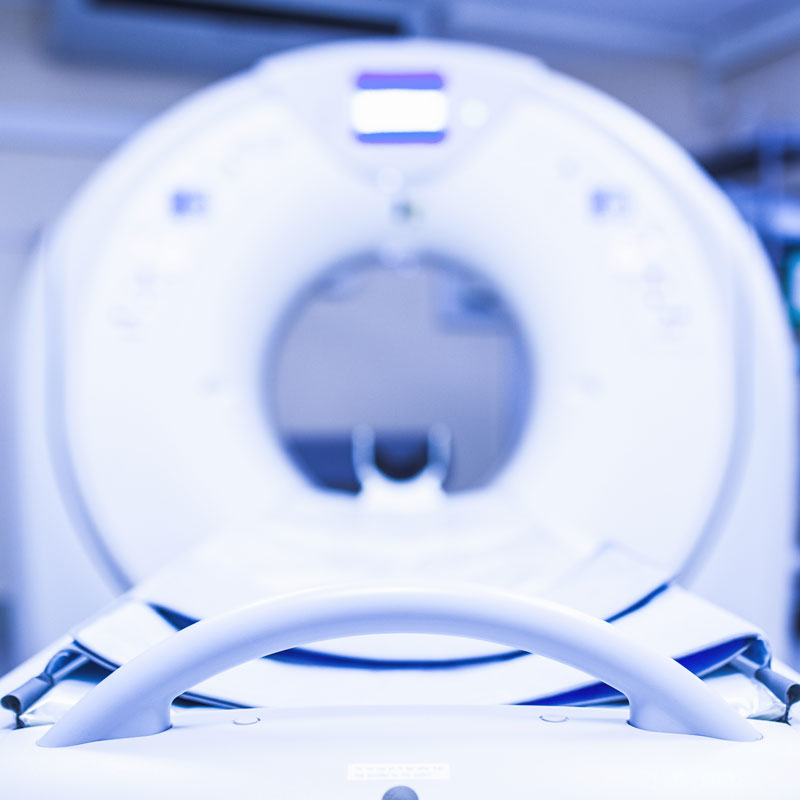Angioplasty
Angioplasty at Arizona Vein and Laser Institute
The endovascular specialists at Arizona Vein and Laser Institute perform angioplasty, a minimally invasive procedure to widen narrow or obstructed arteries. It is a safe and effective process to unblock blood vessels that typically lead to severe health conditions if left untreated. Our team is a leading provider of vascular health and has been committed to offering the highest level of care to patients since our opening in 2005. Contact us to learn more about balloon angioplasty.

Angioplasty Procedures
Angioplasty involves inserting a balloon-tipped catheter into an artery that is too narrow or blocked, prohibiting healthy blood flow. As the catheter is guided through the vein, the balloon expands in the damaged portion to increase the opening and improve blood flow. Often, this process is enough to allow blood to flow freely through the artery. However, some patients may require a stent if they are at further risk of the artery closing. In either case, patients remain awake during angioplasty, and the catheter is typically inserted in the patient’s arm, wrist, or upper leg to gain access to the affected area. Our doctors use live x-ray images to guide the catheter through the veins into the blocked arteries where the balloon is inflated to increase blood flow.

Benefits of Angioplasty
In addition to being a minimally invasive procedure that doesn’t require anesthesia, angioplasty provides many benefits to patients who have narrow or blocked arteries. Clearing blockages and opening narrow arteries can:
- Reduce heart muscle damage during a heart attack by restoring blood flow to the heart
- Relieve chest pain and shortness of breath
- Reduce the risk of a stroke
- Improve blood flow to the legs
- Improve kidney function
Different Angioplasty Procedures
When patients think of blocked arteries, the first thing that usually comes to mind is those connected to the heart and the risk of a heart attack associated with poor blood flow. While this is a common area of concern, it isn’t the only condition where angioplasty can help blood flow. There are two types of angioplasty procedures.
Cardiac Angioplasty
Cardiologists perform this type when one or more of the arteries supplying blood to the heart muscle is wholly or partially blocked. Symptoms include chest pain, discomfort, and shortness of breath. This is known as coronary artery disease.
Peripheral Angioplasty
This is used to unblock arteries in the arms or legs. Patients with blockages in the extremities usually experience pain, cramps, tingling, skin discoloration, or numbness. It is also effective in treating peripheral artery disease, which causes a lack of blood flow to the legs.

What to Expect Before and After Angioplasty
Our staff will advise patients on how to prepare for the procedure properly. We will discuss which medications can be taken prior, and we might recommend not eating or drinking anything for a period leading up to it. No surgical incisions are involved, but we may offer some pain medication to help with any possible discomfort where the catheter is inserted. Patients will remain awake for the procedure, and once the catheter is inserted and removed, patients can go home within 12 to 24 hours. A return to work and daily activities is expected within a couple of days to a week from the procedure. Side effects are typically limited to slight bruising and perhaps a small bump where the catheter was inserted.
Angioplasty Procedure in Arizona
The endovascular specialists at Arizona Vein & Laser Institute are renowned for our angioplasty procedure. As a leading vascular health provider, our team is committed to the highest level of care for patients across Arizona. Prioritize your long-term health and wellness with our trusted team.
The Role of Blood Vessels & Arteries
Blood vessels and arteries play an instrumental role in the function of the body. They are responsible for transporting a nutrient-dense, oxygenated blood supply to the vital tissues and organs. When vessels and arteries become obstructed or compromised, they can no longer deliver a safe amount of blood, causing a decline in the organs and tissues.
The angioplasty procedure is used to widen narrow or obstructed arteries. It is a minimally invasive approach to unblocking compromised arteries to restore sufficient blood flow to the tissues and organs. When obstructed arteries are left untreated, patients experience an influx of unfavorable symptoms and an elevated risk of tissue death, stroke, heart attack, and death.
Blood vessels and arteries can become clogged by buildup, known as plaque. Plaque can derive from an accumulation of cholesterol, fat, calcium, and other substances. Without treatment, these substances harden and narrow the space within the arteries. This reduces the supply of oxygen-rich blood to organs and tissues, leading to more complex medical concerns.
Angioplasty is minimally invasive. As such, there are fewer angioplasty risks than there are advantages. Although very rare, the angioplasty risks and complications may include:
- Inner stent blood clot formation
- Catheter site bleeding
- Artery damage
In cases where the artery is impacted by a significant narrowing or obstruction, the catheter used during the angioplasty surgery cannot fully pass through the artery. This prohibits the balloon from inflating and successfully moving the buildup from the walls of the artery. When this occurs, patients may achieve minimal or no relief from symptoms.
Following an angioplasty procedure, the catheter will be removed, and patients will remain under observation for 12-24 hours before they can return home. Patients can typically resume their normal activities and work within a week of treatment. Soreness, bruising, and slight discoloration surrounding the catheter site are to be expected.
Angioplasty recovery calls for several lifestyle modifications. For five days following the angioplasty, it’s important to refrain from strenuous activity, including heavy lifting, driving, and exercise. Prioritize your diet, avoiding foods high in saturated fats and salt. In addition, it’s imperative to take the medications provided to you as prescribed.
The angioplasty procedure is minimally invasive and does not require anesthesia. In addition, angioplasty provides many benefits, including:
- Reduced hearted muscle damage during a heart attack by restoring blood flow to the heart
- Relieve chest pain and shortness of breath
- Reduced risk of stroke
- Improved blood flow to the legs
- Improved kidney function
Prioritizing a heart-happy lifestyle following your angioplasty procedure is imperative to maintain your health. To promote optimal angioplasty recovery, we recommend:
- Lower cholesterol levels
- Adopt a healthy, balanced diet low in saturated fat
- Maintain a healthy weight
- Prioritize regular exercise
- Manage diabetes and high blood pressure
- Take medication as prescribed
Contact Us to Schedule Angioplasty
Patients in the Metro Phoenix, AZ metro area looking for a qualified and established clinic for angioplasty should contact the Arizona Vein and Laser Institute. Our facility is equipped with state-of-the-art equipment and knowledgeable physicians with your safety and comfort in mind at all times. We accept most major insurances and Medicare and discuss all of your angioplasty options, including the use of a heart stent for any cardiac concerns. Contact us to schedule a consultation today.
